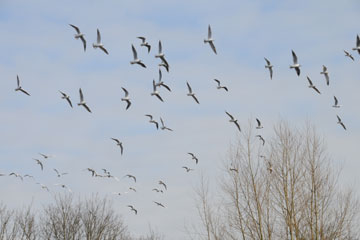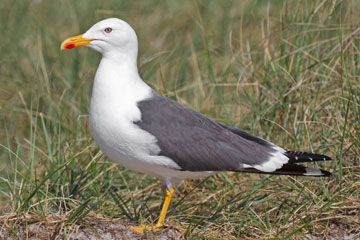Gulls
In the UK only three gull species are recognised as being potential pests:
- Greater black-backed gull Larus marinus
- Lesser black-backed gull Larus fuscus
- Herring gull Larus argentatus
About 8 per cent of the UK's herring gulls and 3 per cent of black-headed gulls now nest in towns

The negative effects of gulls in city centres include
- Aggression;
- Blocked chimneys;
- Car paintwork eroded.
- Damage to property;
- Droppings;
- Littering;
- Noise;
The problem affects residents, tourism and businesses and many local authorities are having to deal with increasing numbers of complaints.
It should be noted, however, that in general, gulls are declining (global herring gull population down by 40 per cent since 1970, and the black-headed gull down by 40 per cent in 20 years).
Gulls can behave aggressively towards other birds, pets and humans during the breeding season, which runs from March to the end of July.
Urban gulls are increasing at a rate of 20 per cent per year, and could become a bigger menace than rats.

Following the Clean Air Act, 1956, gulls were drawn to inland landfill sites where plenty of food was available to them. They soon learned that urban areas – towns and cities – also offered them food (fast-food outlets, littering and people deliberately feeding the birds), shelter and heat from the buildings. The food so easily available to gulls in towns and cities enables gulls to raise large numbers of chicks. These chicks return to their “home” and will eventually breed there.

